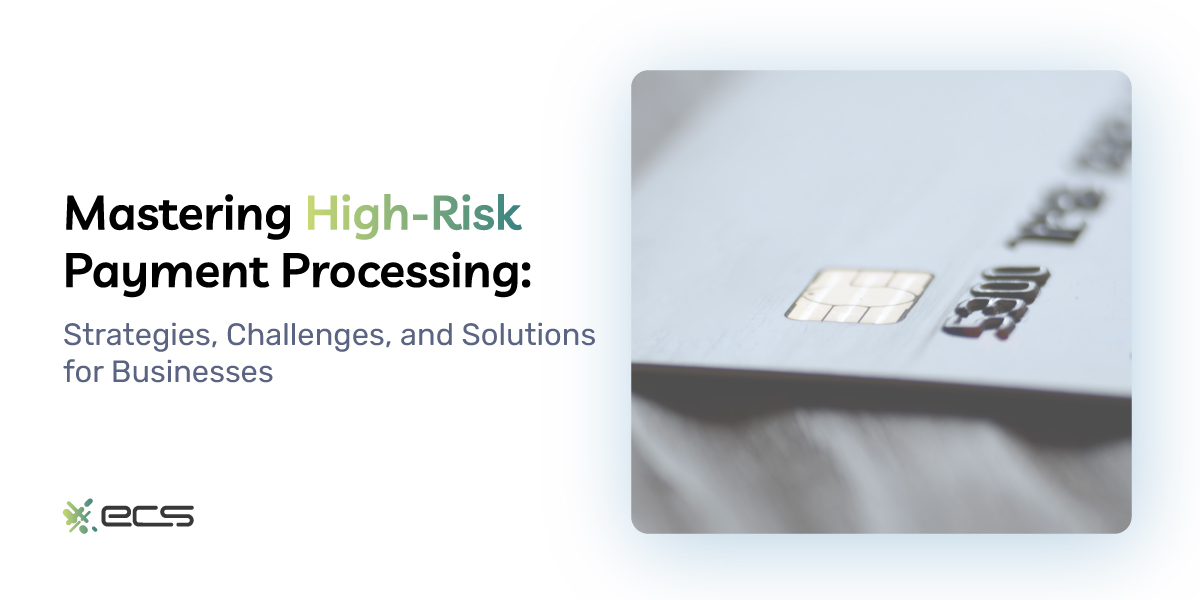In today’s business environment, accepting digital payments is crucial to your company’s success-especially for an e-commerce business, where digital payments can make up the entirety of their incoming revenue. High-risk payment processing is a critical aspect that business owners, both experienced and new entrepreneurs, must navigate.
Digital payments alone can be a complex subject that initially may seem daunting. Business owners can be overwhelmed with so many options, new payment methods, and fee structures. Confusion can lead to less-than-ideal decisions, especially regarding one of the most important aspects of their business. But, add high-risk into the equation and business owners face additional stressors.
A surprising number of products, transactions, and entire industries qualify as “high-risk.” The high-risk designation is placed by the credit card companies and related financial institutions. The designation does not refer to the product or service itself. Instead, the high-risk designations apply to the rate of chargebacks, fraud, or past merchant history.
Selling an item deemed high-risk or operating in a high-risk industry can complicate your payment processing decisions. This means there is a potential that if you don’t fully understand high-risk processing, you can pay significantly higher processing fees by choosing the wrong payment processing solution.
Not only that, you could risk losing your merchant account if you process high-risk items without the proper accounts in place.
To help your business avoid these problems and ensure you receive the lowest transaction fees possible, we’ll go over the entire high-risk processing ecosystem.
After reading this article, you’ll understand what high-risk processing is and how to make sure your business can keep processing digital payments at the lowest rate possible.
Understanding High-Risk Businesses
At first glance, the idea of a high-risk business likely makes you think of a high-risk product or service. But that’s a common misconception, and the high-risk designation refers to the financial risk of processing transactions.
With all forms of digital payments, there is a financial risk. Those risks can come in the form of fraud. For example, a criminal uses a stolen credit card number to make a purchase.
Another type of risk is through chargebacks. This is when a customer attempts to reverse the charges. Sometimes, this is done legitimately because the customer is unsatisfied. However, customers sometimes use chargebacks maliciously to receive an item for free.
Overall, reducing these risks is a key part of a high-risk processing strategy.
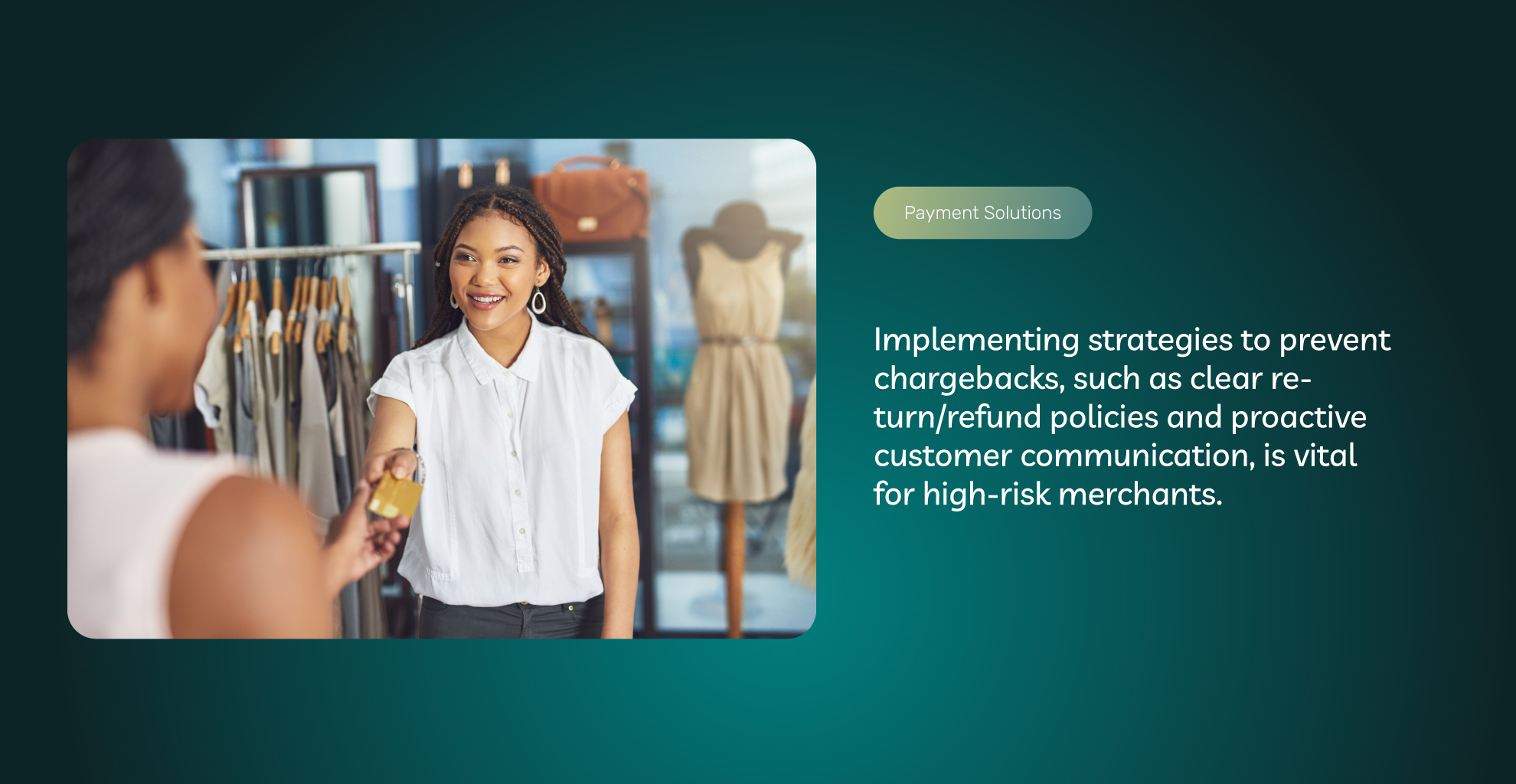
Characteristics Of A High-Risk Industry
A high-risk industry has consistently shown higher fraud rates, chargebacks, and other issues than other industries considered a normal risk.
The following criteria can determine whether an industry is high-risk:
- Above average chargebacks
- Higher levels of fraud
- Higher return rates or other issues
- Average transaction size (higher average transactions involve more risk)
- High monthly volumes of sales
- Regulated industries (such as firearms or alcohol sales)
- Transactions when the card is not present
- History of fraud
These are just the main areas of consideration when credit card companies and networks decide whether transactions are high-risk. They may also use other criteria specific to the merchant in some cases.
Risk assessment for businesses can involve the business owners processing history, credit, and other factors.
Another important aspect of high-risk processing is that the designation can apply to individual products or services, entire industries, or individual merchants based on their sales history.
For example, payment processors classify a business selling firearms as high-risk due to considering the entire firearms industry as high-risk. This designation will apply regardless of the merchant or their sales history.
If you sell a mix of high-risk products but aren’t in a high-risk industry, you still will need a high-risk merchant account to handle those products. High-risk transactions go through different fraud detection protocols than standard-risk transactions.
Finally, even if your industry is not considered high-risk, but your specific business starts to experience higher-than-normal fraud and chargebacks, you will likely need high-risk processing services.
Payment Processing Basics
To help you better understand high-risk processing, it’s important to explain how payment processing works overall. Despite appearing somewhat simple on the surface, payment processing involves several separate entities that all work together to maintain the digital payment ecosystem.
Below, we’ll explain the major entities involved in high-risk payment processing.
High-Risk Payment Processing
The payment processor, also known as an acquiring bank, works as an intermediary institution between merchants and the rest of the credit card network.
A payment processor offers merchant accounts to businesses. A merchant account supports credit card, debit card, and other forms of digital payments. It also gives businesses access to a payment gateway, which handles the movement of transaction data across the entire network.
High-risk payment processors are specialized payment processors that have experience in both high-risk industries and high-risk merchants.
They can offer detailed consultations and advice, so your high-risk processing complies with all credit card regulations. They can also help you secure the lowest possible transaction fees because they know the high-risk system.
High-risk payment processors generally also offer traditional payment processing for non-high-risk transactions.
It’s important to know that you must work with a high-risk payment processor if you need high-risk payment processing. If not, you run the risk of losing your merchant account. You may also have difficulty opening a new account in the future.
High-Risk Payment Processing Gateways
As a merchant, the payment gateway is what you connect your business hardware and software to so you can process high-risk transactions.
Several payment gateways accept high-risk transactions, and a payment processor can help you decide which is best for your business.
The payment gateway is a crucial aspect of payment processing because it handles all the data as it moves from your business through the credit card network. Not only that, payment gateways can offer additional features to help your business save money and improve efficiency.
Overview Of A Typical High-Risk Payment Processing Transaction
A high-risk transaction is handled much like any other transaction regarding how it moves across the processing network.
When you initially accept the transaction, your card reader or e-commerce software will send the customer’s information to the acquiring bank.
Your acquiring bank (payment processor) will perform initial fraud checks on the transaction. These may be more thorough than if coming from a non-high-risk merchant.
If the transaction passes the initial fraud checks, it moves to the individual credit networks for further fraud checks.
The transaction is then delivered to the customer’s issuing bank. The issuing bank is the financial institution that had issued the credit or debit card to the customer.
The issuing bank confirms the funds are available and releases the funds to be sent to your merchant account.
The main difference for high-risk payment processing is that your merchant account, payment processor, and payment gateway services must all support your specific high-risk transactions.
This is why it’s critical to use high-risk processing when appropriate.
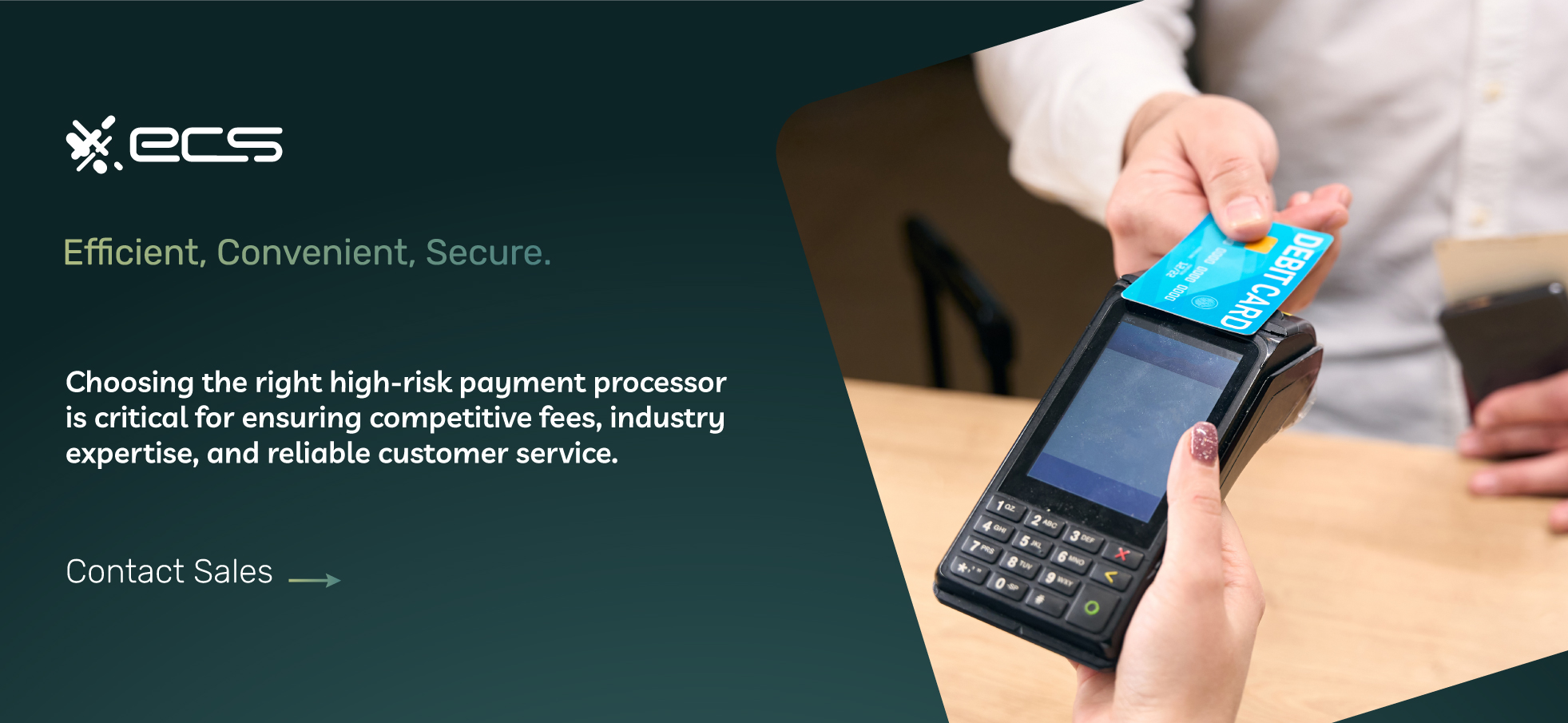
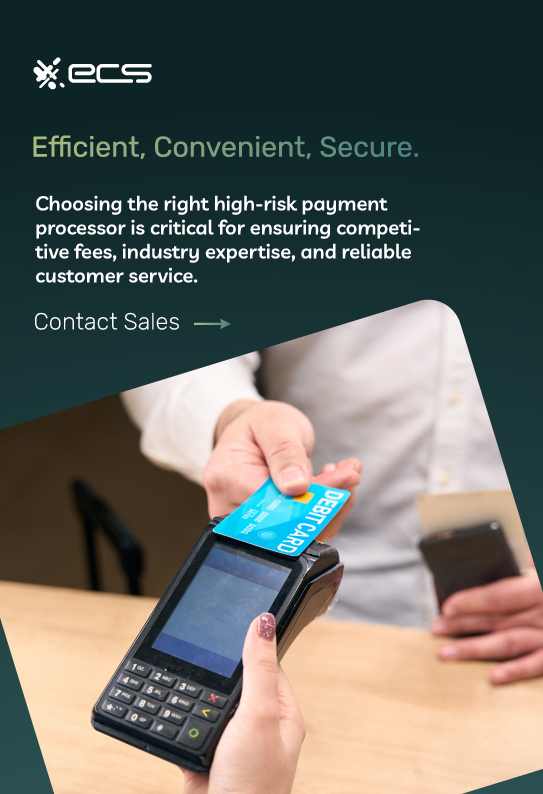
Typical High-Risk Industries
Today, there are more high-risk industries than most businesses realize. Many trusted and respected retailers operate within some of these industries, but the product, service, or industry still carries a high-risk designation.
High-risk industries include:
- Accounting and tax preparation
- Bail bonds
- Tobacco products
- Computer software
- Credit repair services
- Dating services
- Debt Collections
- Debt consolidation
- Diet and weight loss programs
- Virtual digital items
- Document preparation
- Dropshipping
- Financial services
- Firearms and firearms accessories
- Cannabis and CBD sales
- Legal services
- Mail-order transactions
- Multi-level marketing
- Nutraceuticals and supplements
- Online gaming and casinos
- Pawn shops
- Precious metals and coins
- Property
- Search engine optimization (SEO) and search engine marketing (SEM) services
- Self-storage
- Smoking accessories
- Software as a service, or SaaS, companies
- Tech support
- Travel and vacations
- Vape and e-cigarettes
- Subscription-style payments
Chargebacks And Their Impact
The number of chargebacks within a given industry is a major factor in determining high-risk transactions. This also means reducing chargeback risks is a major part of a high-risk processing strategy.
Processors often describe the number of chargebacks as a ratio or percentage. A chargeback ratio above 1% generally categorizes an industry as high-risk.
This means 1% of transactions or more are going through the chargeback process.
The 1% ratio should not be a target for merchants. Instead, you want to keep this ratio as low as possible. Exceeding 1% is often a problem, and approaching 1.5% generally means you will want to take action to curb your chargeback if you want to maintain normal processing with the least amount of fees and penalties.
What Is A Chargeback?
It’s important to understand what exactly a chargeback is. A chargeback may seem like a simple refund process initiated by the cardholder. But it’s a complex and formal process that can be costly and lengthy.
However, as a merchant, you still have to deal with the process and understand it to avoid excessive fees and losses.
How The Chargeback Process Starts
Cardholders generally initiate chargebacks. Sometimes, the card issuing bank initiates the chargeback, but this is less common.
When a cardholder initiates the chargeback process, their issuing bank will do a preliminary investigation. In these cases, issuing banks often give cardholders the benefit of the doubt, allowing most chargebacks to proceed.
Once the cardholder’s issuing bank approves the chargeback process, the merchant will receive a notification. At that point, you can choose to accept the chargeback or dispute it.
If you accept the chargeback claim, the cardholder receives the disputed funds. You will also pay any fees or other penalties per your merchant agreement and card network usage agreements.
At that point, you can consider the chargeback close, and no further action will be necessary.
Representing or Disputing A Chargeback
If you dispute the chargeback, you are actively representing the charge. When you dispute or represent the chargeback, you begin the process of submitting your own evidence to try to prove the transaction was valid and approved by the cardholder.
As a merchant, there are strict deadlines and processes when disputing a chargeback. This means you must dedicate a certain amount of time and resources to the process.
You have to decide if it’s worth your time to dispute specific chargebacks; otherwise, you’ll increase your total losses for the situation.
However, if you are confident you have sufficient evidence to dispute the chargeback successfully, you can submit your information to the issuing bank.
The issuing bank will then either accept or reject your evidence. The issuing bank can also request further information if they are still unsatisfied and cannot make a determination.
Once the process is complete, the issuing bank will make its final determination. If they reject your evidence, they approve the customer’s chargeback. You can still pursue the issue further by filing for arbitration through the card networks.
However, arbitration can cost hundreds of dollars in fees, so you need to determine if it’s worthwhile.
If the issuing bank approves your evidence, it reverses the chargeback, allowing you to retain the original funds.
Other Chargeback Options
If a merchant does not respond to a chargeback, the system will approve the chargeback, and the merchant will incur additional fees for the lack of response.
This is one of the reasons chargebacks are so time-consuming and expensive for merchants. Regardless of the outcome, the merchant has to spend time and resources on each one.
When To Accept A Chargeback
While accepting a chargeback without disputing it all can be frustrating, doing so is sometimes the correct choice.
If you decide the charge resulted from true fraud and was a fraudulent transaction, you should accept the chargeback. You will likely not be able to successfully dispute it, and you’ll just be wasting more time and money doing so.
So-called “friendly fraud” can also be difficult for various types of businesses to dispute. Friendly fraud is when the customer claims fraud, but they knowingly approved the transaction.
Another reason you should consider accepting a chargeback is if you do not have sufficient evidence to counter it. Once again, in these cases, you’ll just be extending the process longer and costing yourself more money in the end.
Chargebacks happen, and they’re a part of accepting digital payments. The problem is if they occur more frequently than industry standards, you need to change your processing workflow to counteract the rise in chargebacks.
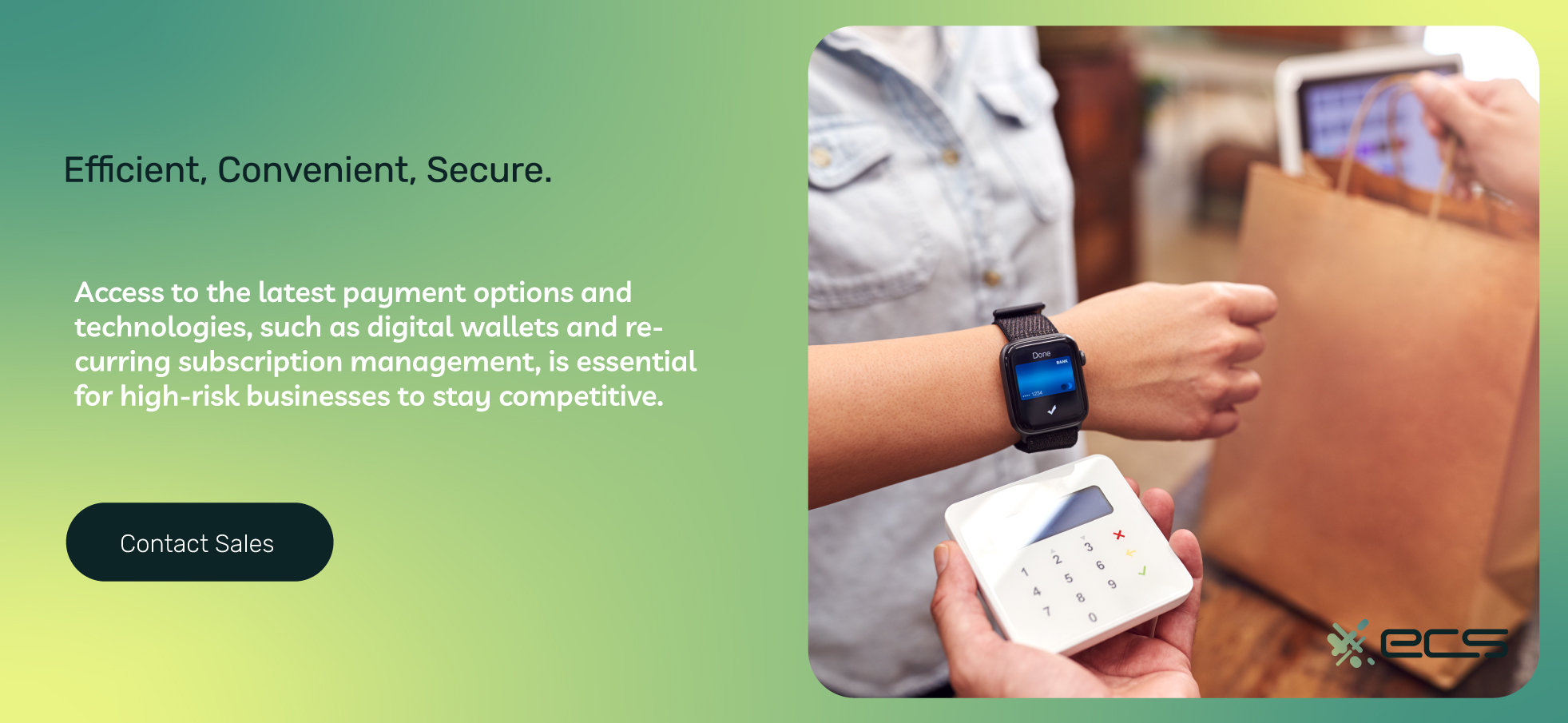
Learning From An Increase In Chargebacks
No business wants to see higher chargebacks, but if it happens, use it as a learning experience to improve your workflow.
This is necessary because even with high-risk processing, you can lose your merchant account if your chargeback ratio gets too high.
If your chargebacks are increasing with high-risk processing, the first step is contacting your payment processor.
If possible, your payment processor wants to work with you to bring your chargebacks down. Your payment processor could enable extra filtering options or fraud detection to help you.
Next, you want to identify any similarities in your chargebacks to eliminate a shared root cause.
For example, if all your chargebacks are coming from specific countries, you can filter those countries or place all of their transactions on hold for manual approval.
Another possibility could be that a specific product or line of products is contributing to your chargebacks. If this is the case, you may want to consider your overall revenue from those products and decide if it’s worth it to continue carrying them.
Financial Consequences Of Chargebacks
Chargebacks are a part of high-risk processing, but you want to keep them as infrequent as possible due to the high cost.
Every chargeback will have a chargeback fee. The fee can vary depending on your merchant agreement, but it can be anywhere from $25 to $45 per chargeback. There is also a fee if you refuse or forget to reply to a chargeback.
Next, there are rolling reserves in payment processing. It’s not uncommon for high-risk merchants to have a certain rolling reserve amount.
A rolling reserve is a specific amount of funds that your payment processor holds for a period of time. This reserve is to cover any chargebacks or expenses that can arise.
The more chargebacks you get, the higher your rolling reserve will likely be. Since the rolling reserve can impact your cash flow, you want to keep this as low as possible. Preventing chargebacks is one of the best ways to keep your rolling reserve low.
Another cost of chargebacks is the loss of goods. If the chargeback was due to fraud, you lose the sale and the goods you sold or shipped.
For digital goods, this isn’t as big of an issue. But for physical goods or services, this really impacts your revenue.
How to Prevent Chargebacks
When you’re a high-risk merchant, you have to use every tool at your disposal to keep your chargebacks as low as possible or prevent them entirely.
Thankfully, many high-risk business solutions put the control back in your hands. These tools help you minimize the risk of chargebacks and lower your overall processing costs.
Below are some strategies for minimizing payment risks and avoiding costly additional fees.
Implement A Clearly Defined Return/Refund Policy
Every business should have a fair and transparent return policy. Using nuanced solutions for varied business types can help. For example, custom-made products will have a different return policy than ready-made products.
But the more transparent you are about returns and refunds, the lower your potential risk of chargebacks will be. A clearly outlined return and refund policy can also help you when it comes to disputing chargebacks.
Tell Customers To Contact You First
Use messaging on your website or invoices instructing customers to contact your business first if there is an issue with your order.
Some customers simply can’t find who to contact at a business and decide to initiate a chargeback instead. Other times, customers send an email without a response, so they initiate a chargeback.
You always want to work with a customer first before they initiate a chargeback. You have far more flexibility, and you can offer discounts, adjusted amounts, or other options that are not available once the chargeback starts.
Most customers understand that occasionally, purchases don’t turn out how they want. As long as they feel the business is in communication with them and being fair, they will be open to various solutions that don’t involve a chargeback.
Be Honest About Shipping & Delivery Times
This is especially true for items with longer delivery times, such as dropshipping or other third-party selling.
Navigating Industry-Specific Risks
Another chargeback management strategy is to focus on specific industry risks and use tools to mitigate those risks.
Monitor Your Industry
This may seem obvious, but business owners can lose touch with the latest trends in their industry. You want to stay on top of current trends and any fraud increase targeting your industry.
Knowing about a growing fraud threat enables you to implement fraud protection measures before it affects your business.
Foster Relationships With Your Payment Processor
For any high-risk business, your choice of payment processor is critical. The more experienced your payment processor is, the more assistance they can offer your business.
This includes industry-specific risks. For example, an experienced high-risk processor will know your business and industry. Based on their history with other merchants, they can offer you proactive solutions to put in place to avoid chargebacks.
Carefully Track Analytics
Your sales data and analytics can provide insights into certain risk factors contributing to fraud. You can notice increased returns or customer service complaints related to specific issues by carefully looking at your sales data.
These types of early warning signs can point to an increase in chargebacks. Try to fix the issues leading to customer complaints and returns before they possibly turn into chargebacks.
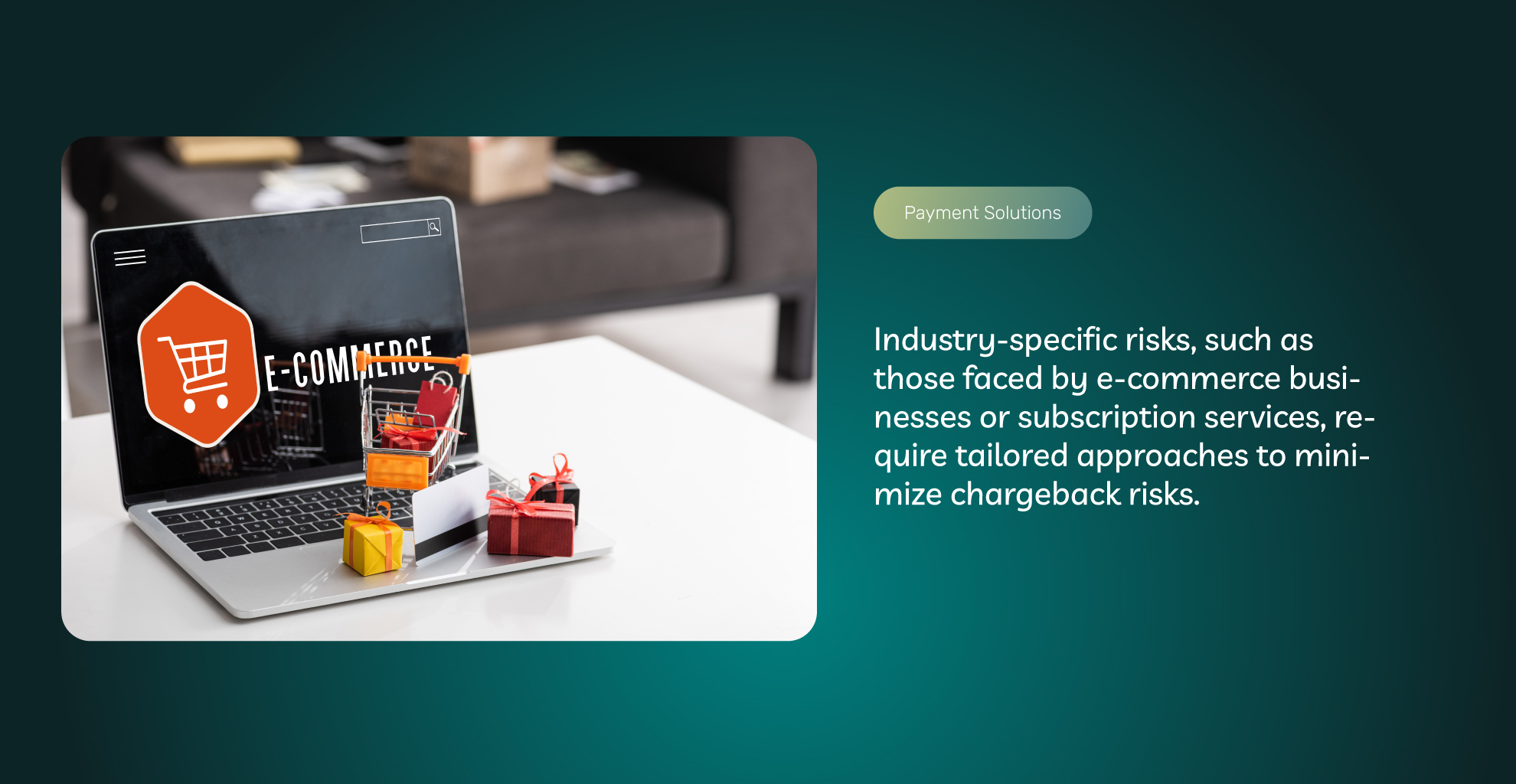
ECommerce Risks
E-commerce risks can include several different issues. Most e-commerce chargebacks stem from the following.
- Fraudulent purchases
- Product dissatisfaction
- Delivery delays or disputes
To mitigate the risks for an e-commerce business, you want to first ensure your fraud detection measures are adequate. Your payment processor and payment gateway both have tools to help you filter out a significant amount of fraud before it even happens.
Next, ensure that you clearly communicate your customer service options to the customer. For example, having dedicated customer support on your website that is easy to find.
Finally, try to make your shipping and order fulfillment as efficient as possible to reduce delays. For some businesses, using a third-party fulfillment service can help them streamline their order fulfillment in a cost-effective way.
Subscription Services & Recurring Billing
Many subscriptions and recurring business models can qualify as high-risk. If you’re in this industry, you want to focus on a few key strategies to minimize chargebacks.
Most subscription chargebacks are the results of cancellation difficulties or unrecognized charges.
Many customers may have simply forgotten that they have subscribed to a service and then don’t recognize the item on their bill.
One way to minimize this is by having clear and concise billing descriptors for your merchant account. The billing descriptor is what the customer sees on their statement.
If this descriptor differs from your website name or is hard to understand, it can increase your rate of chargebacks.
Talk to your payment processor about adjusting your billing descriptor so customers know exactly where the charge comes from.
Finally, avoid making your cancellation process difficult or too time-consuming. This can lead to chargebacks even if there is no intentional fraud.
When customers can’t cancel, they’ll often charge back several months of charges.
Digital Goods
Credit card processors almost always consider digital goods like in-game items, virtual currency, or downloads high-risk.
To reduce your overall risks in these industries, have a clear and accurate description of the digital good or download. Customers should understand precisely what they are receiving and the timeframe for digital delivery.
Next, employ a secure delivery method to ensure the person receives and confirms their product. You can use many third-party tools for digital delivery and content rights management.
Another issue with digital downloads or virtual goods is that many businesses run these sites on auto-pilot. Because of the nature of digital goods, you can automate most of the business.
While this can lead to great passive income, it also puts you at risk for chargebacks if something goes wrong and you are slow to respond.
Even if you’re using automation for a business like this, regularly check your products and other services to ensure they still function properly.
Finally, communicate with your customers during the purchase and tell them to contact you if any problem arises. For digital goods, it’s often best to just refund the money if there is a dispute instead of risking a chargeback.
WooCommerce, Shopify, And High-Risk Online Stores
If you’re an online retailer or run an e-commerce business of any kind, you likely use a platform such as WooCommerce or Shopify. These e-commerce platforms make it easy to launch an e-commerce business and can handle significant traffic and sales.
However, if you’re operating a high-risk e-commerce business, using these platforms can add additional risk to your business.
When using a platform like Shopify or WooCommerce, you need to understand how they work to avoid suspending your account or losing funds.
Most shopping platforms prohibit the sale of high-risk products. This is especially true if you use the platform’s integrated payment system.
For example, Shopify has a payment processing solution called Shopify Payments that they offer to users of their platform. Shopify Payments operates as an aggregate payment provider.
An aggregate merchant account provider pools many different merchants under one account, in this case, the Shopify Payments account.
Almost no aggregate merchant account will allow high-risk processing, as with Shopify Payments. It’s the same with WooCommerce-hosted solutions.
However, there is a workaround for each platform.
Shopify & High-Risk Transactions
With Shopify, you will need to obtain your own individual high-risk merchant through a payment processor. You can then bypass Shopify Payments and instead use your own merchant account for all payment processing.
Shopify still bans certain products and services and they will drop your account if you sell them. but you can still process many high-risk items by using your own high-risk merchant account instead of Shopify Payments.
WooCommerce & High-Risk Transactions
WooCommerce is a little different, and overcoming WooCommerce restrictions takes more effort. To sell high-risk products using WooCommerce, you will need to host the software yourself.
It will function the same as if you used the WooCommerce-hosted solution. The only difference is you need to host it on your own servers.
From there, you would then obtain a high-risk merchant account from a payment processor and integrate that account with your WooCommerce installation.
Unlike Shopify, when you host your own WooCommerce installation, there are no restrictions on what you can sell or process transactions for. As long as the product is legal and allowed by the credit card companies and your processor, you can sell it.
Overall, choosing high-risk e-commerce solutions is difficult. But the bottom line is that most major platforms have options and workarounds.
Aggregate Merchant Accounts & High-Risk Processing
Virtually all aggregate merchant account providers, such as Square, Paypal, or Stripe, do not allow high-risk processing.
Even if they allow certain things, like digital goods, they reserve the right to suspend your account at any time without notice. This can happen if you have a brief period of increased chargebacks or customer complaints.
If this happens, your money is frozen, and you can’t continue processing until there is a resolution, which could take weeks.
If you’re selling high-risk products, it’s important not to use an aggregate merchant account provider.
When you go through a trusted high-risk payment processor and receive your own individual merchant account, you have far more control over your processing. You’ll also avoid having your account or funds suspended for no reason.
A dedicated high-risk payment processor will also be more flexible when evaluating business risk factors involving your industry. With their experience, they can offer you the ability to process payments when other providers can’t.
Choosing A High-Risk Processor
Choosing the best payment processor is an important decision when you’ve determined that you need high-risk payment processing.
You want to keep a few things in mind when making your choice to ensure your payment processing fits your needs and your industry.
Below, we’ll outline what you should look for in a high-risk payment processor.
Industry Experience
Being a high-risk processor isn’t enough if you want the best payment solution possible. You also want your payment processor to have extensive experience in your specific industry.
For example, selling coaching and mentoring services requires a high-risk processor that understands that industry. The same goes if you are in the firearm industry, health supplements, or any other high-risk industry.
Ask your payment processor what experience they have in your industry. This will ensure you get the best solution and competitive fees possible.
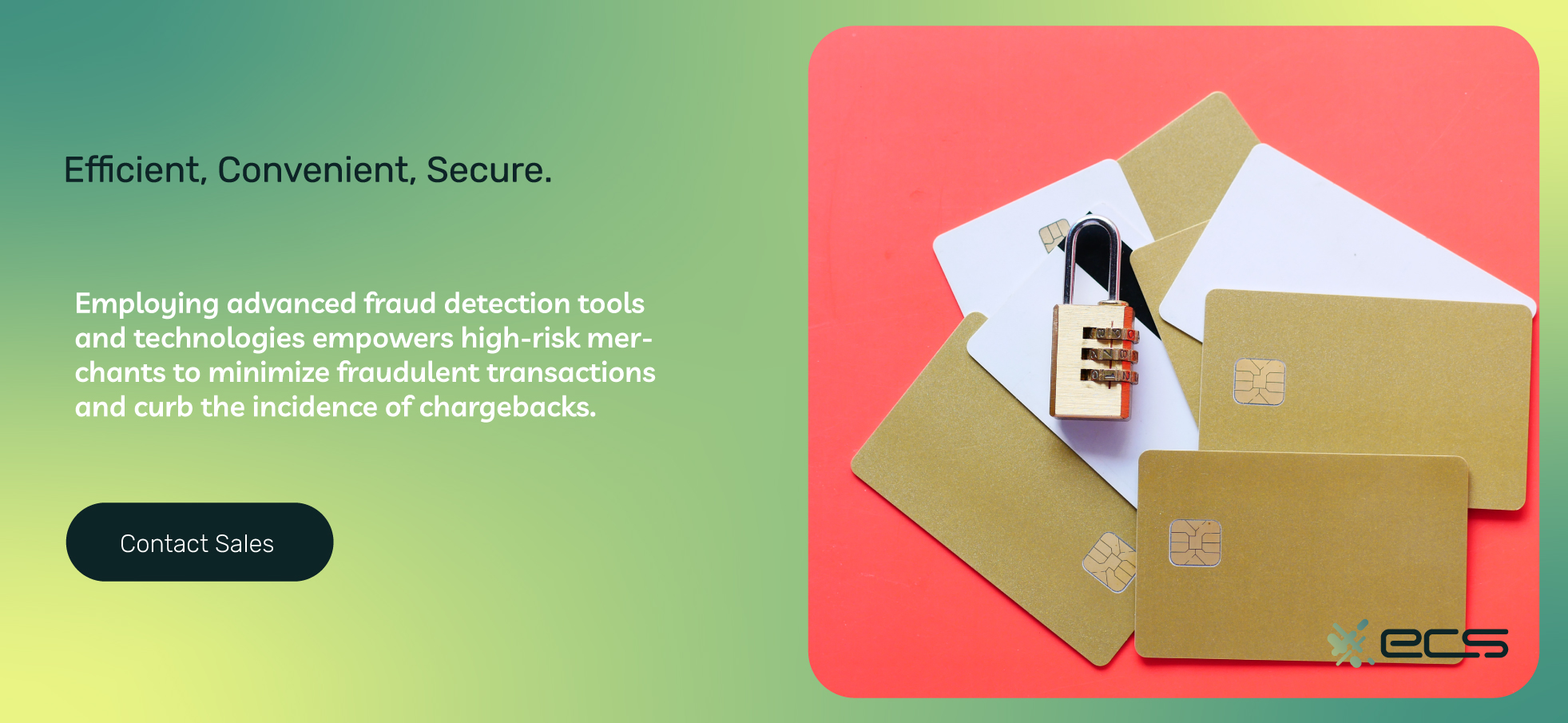
E-commerce & Physical Retail Experience
Many businesses need e-commerce processing in combination with in-person retail transactions. Both of these scenarios have their own specific requirements when it comes to high-risk processing.
Your e-commerce transactions will likely have different fraud protections than your in-person transactions. This can mean different fees and rates for each one.
Navigating this combination of processing to ensure you get the lowest rates requires an experienced payment processor that can handle high-risk transactions in person and via an e-commerce channel.
Customer Service
Customer service is important no matter what kind of processing you do. But with high-risk processing, it’s especially crucial.
High-risk merchants need a solid relationship with their payment processor. This allows them to quickly deal with any fraud or chargeback issues that may come up.
The most successful high-risk merchants view their payment processors as technology and business partners, not just service providers.
You’ll want to ensure your payment processor has in-house technical and customer support, not an outsourced call center.
You’ll also want to ensure they are available when you need them. So, if they have limited support hours, that may not work for you if you run a 24/7 business.
Offers The Latest Payment Options
Digital payments have come a long way, even in the last few years. As a high-risk merchant, you may not even be aware of your current options in the digital payment space.
A solid, high-risk payment processor will be able to offer you and your customers the latest tailored payment solutions. Whether digital wallets, payment links, or recurring subscription management, your payment processor can help your business leverage these technologies to boost revenue and cut costs across your business operations.
In addition, you also want standard payment options like ACH and eCheck transactions. Overall, customer-focused payment approaches, in addition to strategies for risk minimization, are needed for high-risk processing success.
As future trends in high-risk payment processing emerge, you want a payment processor that helps you implement the latest technology so your business stays ahead of the curve.
Low Fees
Last but not least is low fees. High-risk processing will always involve higher fees and transaction costs than traditional processing.
But that doesn’t mean all high-risk processors offer the same rates. There are different fee structures that greatly impact your processing costs over time.
An experienced payment processor can help you choose the best fee structure for your business to ensure you always pay the lowest rates month after month.
Payment processors that offer rigid fee structures or a “one-size-fits-all” structure will cost you more with every transaction.
Learn More About High-Risk Comprehensive Business Solutions
High-risk processing involves many complex systems and technologies that must come together for your business.
It’s not something you want to trust with just any processor. Instead, you need a proven leader in high-risk processing that understands your industry.
ECS Payments helps high-risk merchants leverage the latest payment processing innovations in risk management to reduce costs and continue driving sales.
Contact ECS Payments today to learn more about our high-risk services that enable you to process payments in any industry.
Frequently Asked Questions About High-Risk Payment Processing
A business is high-risk based on factors like high chargeback ratios, higher fraud risk, specific industry type, transaction sizes, sales volume, and the merchant’s credit history.
Chargebacks, especially when they exceed a 1% ratio, will categorize an industry as high-risk. Merchants with chargebacks will incur fees, the possibility of rolling reserves, and potential loss of goods, revenue, and reputation. Worst of all, a business may lose its payment processing platform.
Businesses can mitigate risks by being transparent about shipping times, implementing clear return and refund policies, encouraging customers to contact them first if there are any issues, and actively monitoring analytics for potential issues leading to chargebacks.
Platforms like Shopify and WooCommerce typically do not support high-risk transactions. However, high-risk businesses can obtain their own high-risk merchant account through a specialty payment processor like ECS Payments.
